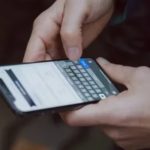Hearing loss affects millions of people across the world. Some people are born deaf, while others lose their hearing at some point in their lives.
Hearing loss tends to be more common in old age, and this is referred to as age-related hearing loss. It results from the radial deterioration of the structures in the ear, causing the reduced ability to perceive different sound waves.
Some genetic conditions and hereditary illnesses can result in hearing loss or complete deafness. Patau syndrome is one of the more common genetic conditions that result in hearing loss.
If the delicate structures inside the ear get damaged due to trauma or the eardrum gets perforated after exposure to loud noises, it can cause the person to lose their hearing.
Regardless of the cause of their hearing loss, deaf individuals can often find it difficult to communicate with others. It can be particularly hard when the people they are talking to aren’t taking the necessary steps to make lip reading easier for them.
Whether you’re interacting with somebody hard of hearing or completely deaf, there are certain things that you need to do if you want to communicate effectively. Making gestures and facial expressions, and speaking as clearly as possible are just a few of the things that you should do.
In this article, we’re going to cover some top tips for communicating with individuals who have partial or complete hearing loss. By following these tips, you can ensure that the deaf people in your life feel comfortable and confident interacting with you.
The best hearing aids and other sophisticated pieces of technology can improve a person’s ability to perceive sounds. But it’s also important to do everything that you can to convey your words and emotions as simply as possible to those who are hard of hearing.
Here are our top tips for interacting effectively with somebody who is deaf, whether it’s a family member, close friend, work colleague, or stranger in the streets.
Speak Clearly and Use Non-Verbal Communication
Most deaf people use non-verbal communication to interpret what others are saying to them. Non-verbal communication includes eye contact, facial expressions, hand gestures, and body language.
By using all forms of non-verbal communication as you speak, you can make things easier for those who are hard of hearing. They can gather more context about what you are saying.
As well as making gestures and facial expressions, you should always make sure to speak as clearly as possible. Deaf people use lip reading to determine what others are saying, so it’s important to keep your mouth visible and use clear movements with your mouth.
For obvious reasons, deaf people will not be able to lip-read if you are facing away from them. Make sure you grab their attention and face them before you begin speaking so that they can easily read your lips and interpret what you are saying.
Avoid wearing a scarf or mask that covers the lower part of your face, and don’t put your hands over your mouth when interacting with a deaf person. This makes it impossible for them to read your lips.
As much as you want to help, try not to over-emphasize your lip movements too much. This can come across as patronizing and is often unhelpful for somebody who is trying to lip-read. Instead, speak normally, the same as you would for a friend who has full hearing.
Use Written Words
It’s not always possible to write things down, but it can be a useful thing to do when you’re struggling to communicate verbally with somebody who is deaf.
For example, if you’re a doctor and you’re trying to describe a complex medical procedure, it might be difficult for the deaf person to read your lips. Medical terminology can be tough to understand for anybody.
By writing down the necessary details of the procedure, you can convey the right messages to your deaf patient so that they fully understand what is going to happen.
Writing down what you want to communicate can be helpful in any situation, not just in a medical setting. It prevents either of you from getting frustrated or stressed about trying to communicate your feelings or repeating the same phrases over and over again.
Use Communication Aids and Tools if Needed
Hearing aids, speakers, amplifiers, and other medical devices can be used to help those who are hard of hearing. If you have one of these devices to hand, don’t be afraid to use it when interacting with somebody who is deaf.
Assisted listening devices can be extremely helpful in amplifying soundwaves and making them clearer for the deaf person to interpret. Whether you are in a medical setting or not, they will make things much easier for both you and the other person.
Be An Active Listener
Being an active listener is essential when communicating with anybody, but it is especially important when you are speaking to somebody who is hard of hearing. Active listening involves showing the other person that you are taking in everything that they are saying.
To show the other person that you are listening to what they are saying involves nodding when necessary, smiling, or reacting to their words. By making these small gestures, you can make the deaf person feel more comfortable with their words.
Often, those who are hard of hearing can lack the confidence to communicate with different people because they are worried about miscommunication. By nodding, smiling, and reacting to their words, they will feel more confident in communicating with you.
Active listening will make the other person feel more comfortable and confident in communicating with you. This can have a positive impact on your relationship with them and help the deaf individual to feel more accepted.


















